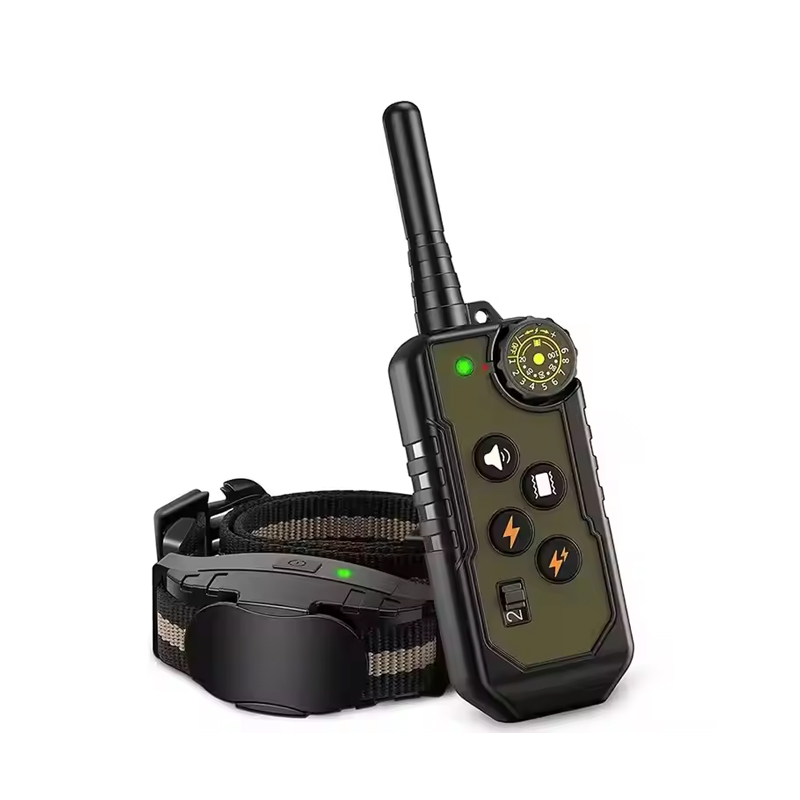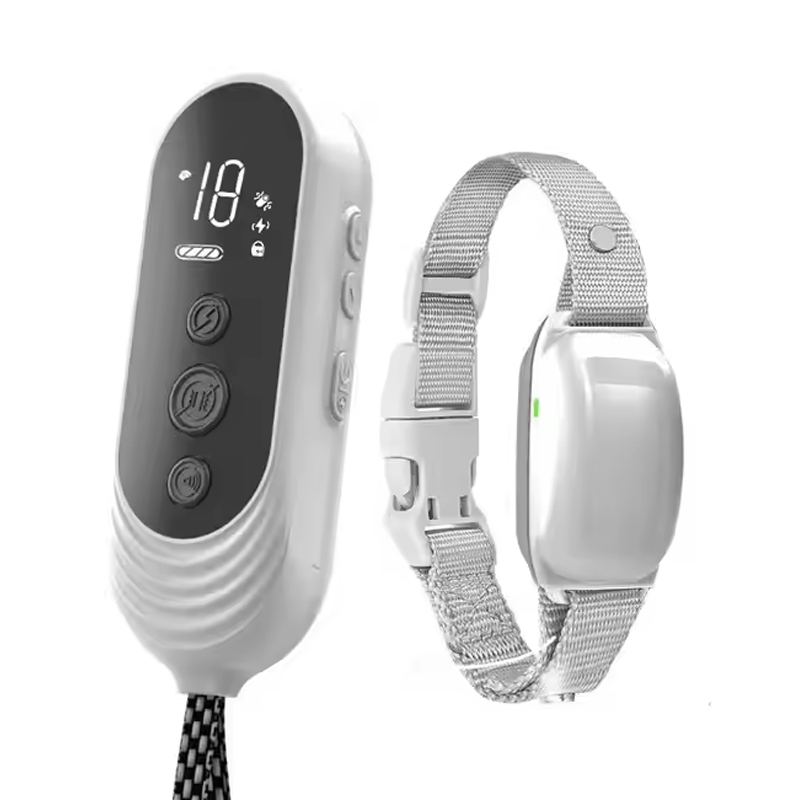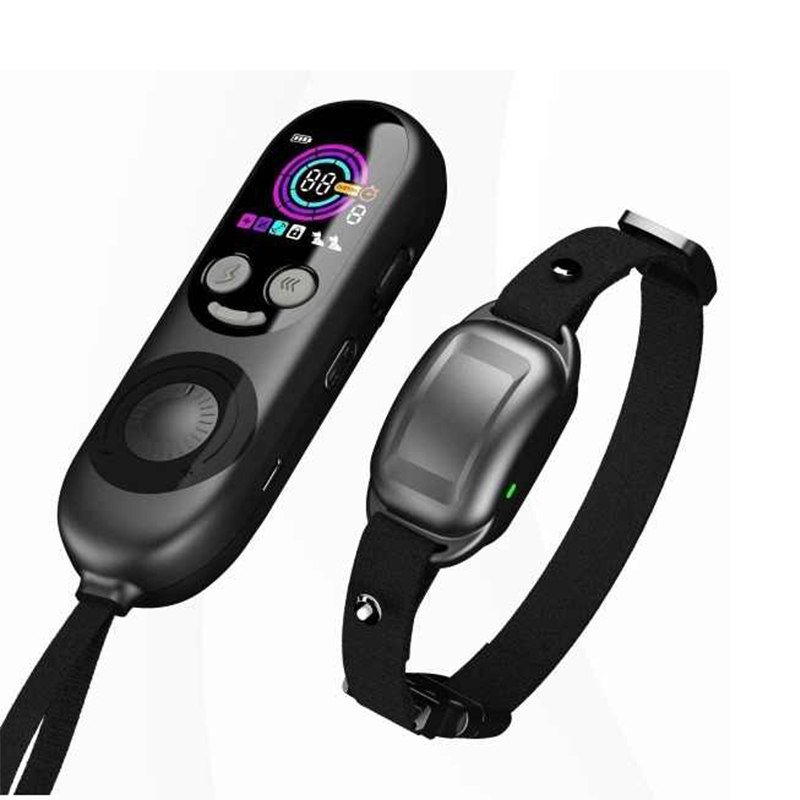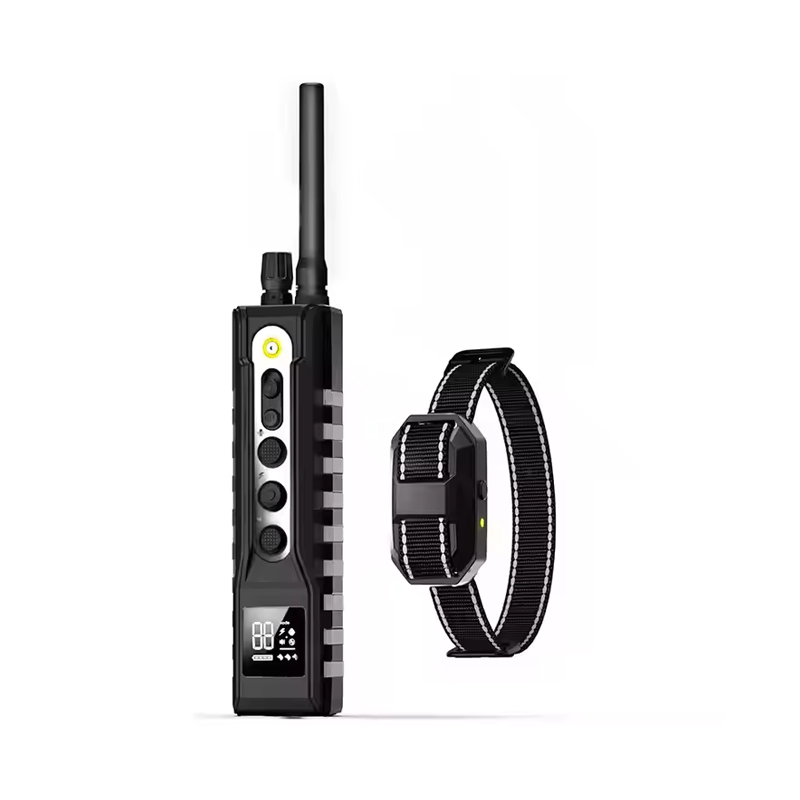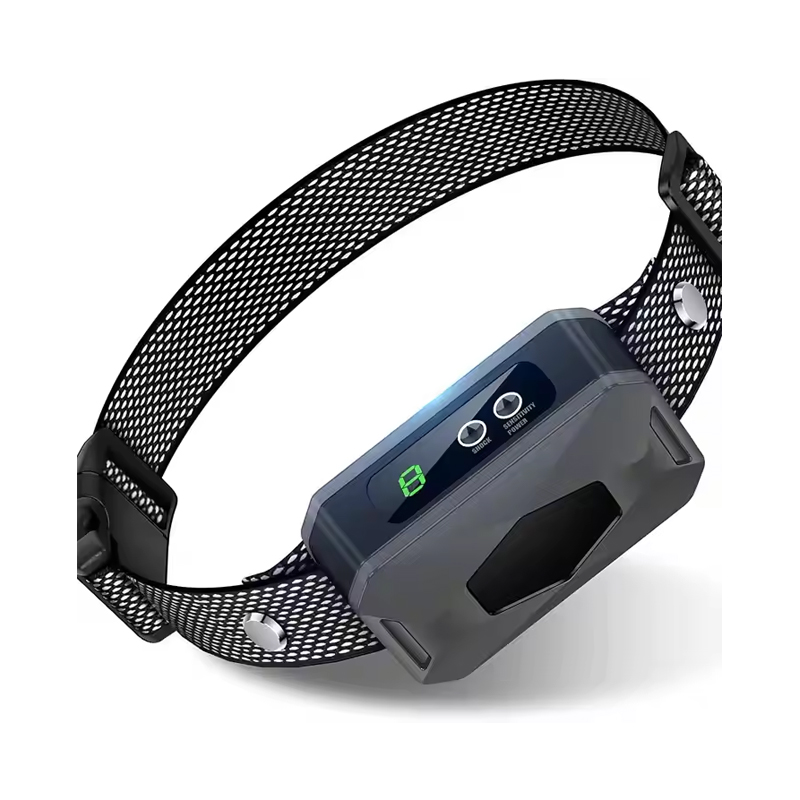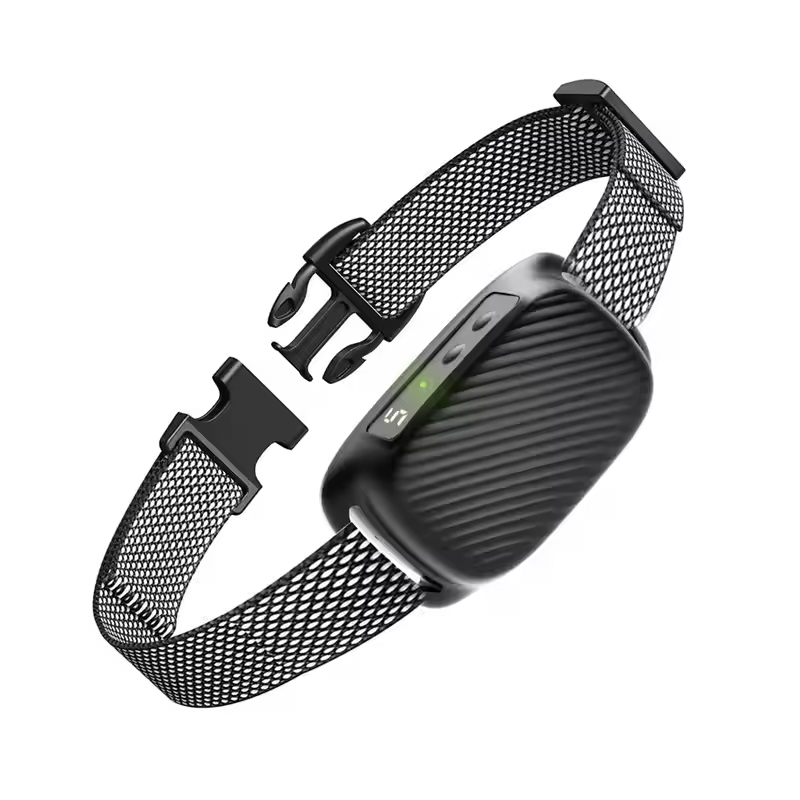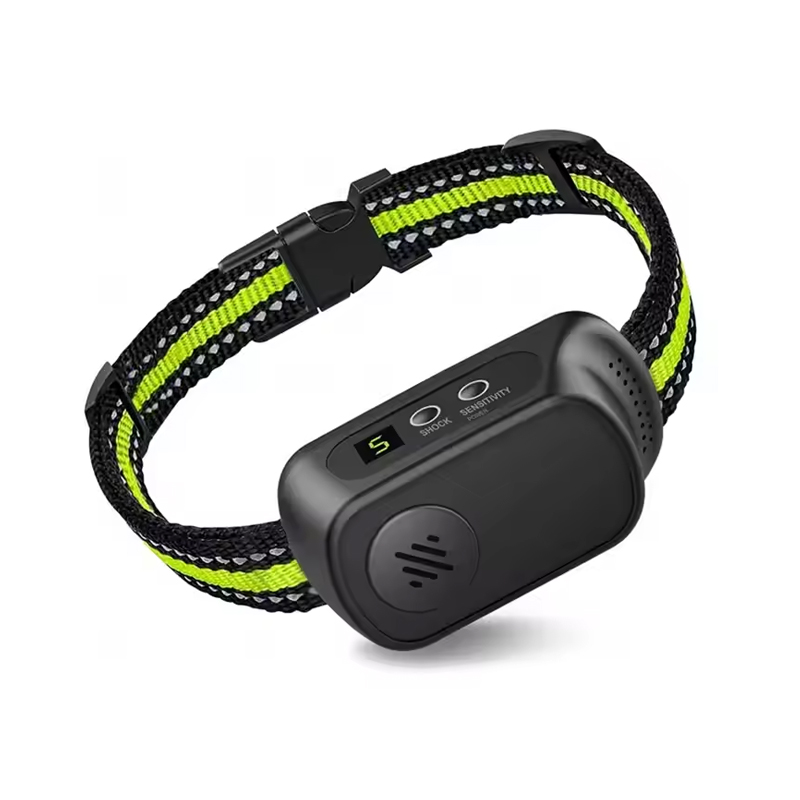- Type:
- Industry News
- Date:
- 2025-07-16
Why Cat Litter Box Automatic Cleaning Are a Must-Have: Key Features, Benefits and more
What is an Automatic Cat Litter Box?
An automatic cat litter box is a self-cleaning litter box that is designed to automatically scoop, clean, and dispose of waste, reducing the need for manual cleaning by the cat owner. This innovative solution allows cat owners to provide a clean and hygienic environment for their pets with minimal effort, making it an increasingly popular choice for busy households and multi-cat homes.
Definition and Basic Working Mechanism
At its core, an automatic cat litter box is a smart, time-saving device that eliminates the tedious task of manually scooping and disposing of cat waste. It typically operates by using sensors or timers to detect when the cat has used the litter box. After a designated period, the device activates a mechanism to scoop out the waste, storing it in a waste compartment that can be disposed of later.
The working mechanism is usually simple yet efficient:
Sensors detect the cat's presence and determine when it has finished using the litter box.
Cleaning mechanisms, such as rotating rakes, brushes, or scoops, automatically move through the litter to separate solid waste from clean litter.
The waste is then collected in a sealed compartment, which can be easily emptied by the owner.
This technology provides convenience for cat owners while ensuring that the litter box remains clean, odor-free, and hygienic for both the cat and the home.
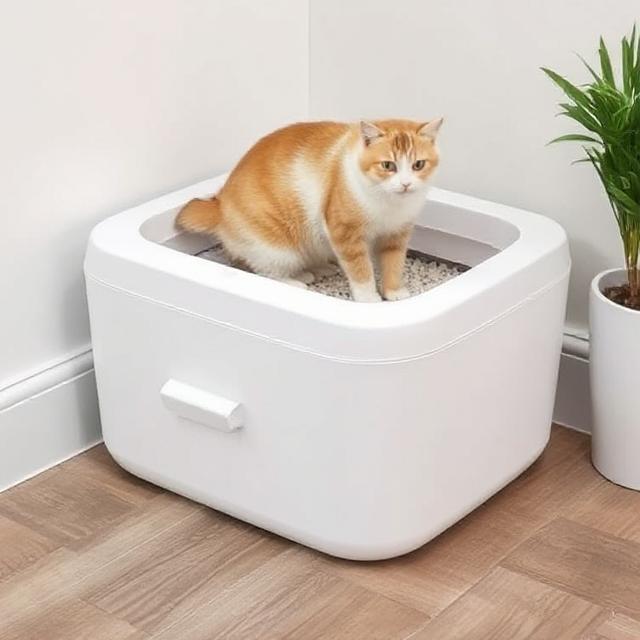
Key Components of an Automatic Litter Box
An automatic cat litter box consists of several key components that work together to perform the cleaning tasks:
Sensors: These are responsible for detecting when the cat enters and exits the litter box. Sensors may also track the cat’s usage pattern to initiate the cleaning cycle at the appropriate time.
Cleaning Mechanism: Depending on the model, the cleaning mechanism can vary. Common designs include:
Raking Systems: A rake or comb moves through the litter to collect waste and deposit it into a waste compartment.
Rotating Systems: The entire litter tray rotates, separating waste and clean litter as it turns.
Scooping Systems: A mechanical scoop lifts waste from the litter and deposits it into a waste container.
Waste Compartment: This is where the waste is stored after being scooped or separated from the clean litter. It is typically a sealed compartment that reduces odors and ensures hygienic storage.
Control Panel/Timer: This allows the user to customize settings such as cleaning frequency and timing. Many models also have a manual override option to start cleaning cycles as needed.
Litter Tray: The base of the automatic litter box, where the litter is placed. It is designed to hold the litter and ensure that the cleaning mechanism can efficiently separate waste.
Power Source: Most automatic cat litter boxes are powered by either electricity (plug-in models) or batteries. Some higher-end models may include rechargeable batteries for added convenience.
Why is an Automatic Self-Cleaning Cat Litter Box Necessary?
The necessity of an automatic cat litter box stems from several key benefits that it offers to both the cat and the owner:
Convenience: One of the primary reasons for investing in an automatic litter box is the convenience it provides. Regularly cleaning the litter box can be time-consuming and unpleasant, especially for those with busy schedules. An automatic litter box reduces the need for daily scooping, saving valuable time.
Hygiene and Cleanliness: Regular cleaning of the litter box is essential for maintaining a clean and hygienic environment for the cat. Automatic self-cleaning litter boxes ensure that waste is removed promptly, reducing the risk of odors, bacteria, and the spread of germs in the home. This is particularly important in multi-cat households, where the litter box may be used more frequently.
Health Benefits: Cats are creatures of habit, and they prefer clean spaces. An unclean litter box can lead to reluctance in using the box, which can result in behavioral problems or even urinary tract infections. The automatic cat litter box ensures that the litter is regularly cleaned, providing a comfortable and healthy environment for the cat.
Odor Control: Automatic litter boxes often feature sealed waste compartments that reduce odors significantly. This is especially beneficial for individuals living in apartments or smaller homes, where the smell of waste can quickly become an issue.
Ideal for Multiple Cats: In households with more than one cat, maintaining a clean litter box can become a daunting task. Automatic self-cleaning litter boxes can handle multiple cats' waste without requiring constant attention from the owner. The automation makes it easier to ensure that each cat always has access to a clean litter box.
Less Mess: Traditional litter boxes often require more frequent refills of litter and can lead to spills and messes. Automatic litter boxes are designed to minimize these issues by maintaining a cleaner environment and automatically adjusting the litter level as needed.
Benefits of Using an Automatic Cat Litter Box
Switching to an automatic cat litter box offers numerous benefits that can significantly improve both the cat owner’s and pet’s experience. Below are the top advantages:
1. Convenience
One of the primary benefits of an automatic cat litter box is the convenience it offers. By automating the cleaning process, you eliminate the need for daily scooping and maintenance. This is particularly useful for busy individuals or those with multiple pets, as it helps save time and effort.
2. Consistent Cleanliness
Automatic litter boxes ensure that the litter box is consistently clean after each use, which is particularly important in multi-cat households. With manual cleaning, there's a chance of missing spots or waiting too long to clean, which can lead to unpleasant odors. An automatic system ensures that waste is promptly removed, maintaining cleanliness at all times.
3. Better Odor Control
An automatic cat litter box typically features built-in odor control mechanisms such as sealed waste compartments, carbon filters, or ventilation systems. These help to reduce unpleasant smells, keeping your home smelling fresh and clean without the constant need for air fresheners.
4. Healthier Environment for Cats
Cats are creatures of habit, and they prefer a clean and comfortable place to do their business. A dirty litter box may discourage cats from using it, potentially leading to behavioral issues. By using an automatic litter box, you ensure your cat always has access to a fresh, clean space, reducing the risk of health problems associated with unhygienic environments.
5. Time-Saving for Pet Owners
If you have a busy lifestyle, an automatic cat litter box can save you valuable time. You no longer need to worry about cleaning the litter box daily or making sure it's always fresh for your cat. The automation allows you to spend more time on other activities or with your cat, rather than on chores.
6. Ideal for Multi-Cat Households
In homes with multiple cats, managing a litter box can be a huge task. An automatic cat litter box is especially beneficial here, as it can handle the higher frequency of use without requiring constant attention from the owner. Multiple cats can use the box, and the cleaning cycle will still run efficiently, keeping the litter box clean and odor-free.
7. Reduced Risk of Allergens
Regular manual cleaning of the litter box can stir up dust and allergens, which may affect people with allergies or asthma. With an automatic litter box, waste is scooped and stored automatically, reducing exposure to allergens and keeping the environment cleaner.
8. Less Mess
Automatic litter boxes are designed to minimize litter spillage and tracking. They often feature high walls and enclosed areas to prevent litter from being kicked out or scattered around the room. This keeps your floors cleaner and reduces the amount of time you need to spend cleaning around the litter box.
Features to Consider When Buying an Automatic Litter Box
| Feature | Details |
|---|---|
| Cleaning Mechanism | Raking, rotating, and sifting systems for automatic waste removal. |
| Size and Capacity | Choose based on your space and the number of cats in the household. Larger models for more cats. |
| Noise Level | Some models are quieter than others, choose based on your cat's sensitivity. |
| Odor Control | Carbon filters, sealed waste compartments, and ventilation systems to reduce odors. |
| Ease of Maintenance | Easy-to-remove waste bins and simple litter refilling process. |
| Power Source | Battery-powered, plug-in electric, or rechargeable models. |
| Safety Features | Motion sensors and timer functionality to ensure safety and efficient operation. |
| Smart Features | Mobile app integration and self-diagnosis alerts for monitoring and controlling. |
| Litter Type Compatibility | Compatible with clumping or non-clumping litters, depending on the model. |
Types of Automatic Cat Litter Boxes
Automatic cat litter boxes come in various types, each offering different cleaning mechanisms and features to meet the needs of both cats and their owners. Understanding these types will help you make an informed decision based on your requirements, whether it be for convenience, hygiene, or space-saving.
1. Raking Type Automatic Cat Litter Boxes
These are the most common type of automatic cat litter box. They feature a rake or comb-like mechanism that moves across the litter box after your cat has used it, pushing the waste into a compartment for disposal. These litter boxes are highly effective for single or multiple cat households and often include features like motion sensors and timers.
Pros:
Efficient waste removal.
Often quieter than rotating models.
Simple design with fewer moving parts.
Cons:
Can sometimes miss clumps that are too small.
May require more frequent litter changes.
2. Rotating Type Automatic Cat Litter Boxes
Rotating automatic cat litter boxes feature a rotating drum that sifts the waste from the clean litter. The waste is collected in a compartment at the end of the drum, making it easy to dispose of. These types of boxes are great for owners who want a completely hands-off experience.
Pros:
Completely automated.
Better at sifting litter, leaving it fresher for longer.
Efficient waste collection system.
Cons:
Typically more expensive.
May be larger in size, requiring more space.
3. Sifting Type Automatic Cat Litter Boxes
Sifting automatic litter boxes work by allowing the clean litter to sift through a mesh screen while separating clumps of waste. The collected waste is deposited into a waste compartment below. These litter boxes often come with multiple layers of sifting trays that are easy to remove and clean.
Pros:
Great for controlling odor.
No electrical components, which can be more reliable.
Easy to use and clean.
Cons:
Can be heavier and bulkier than other types.
Might not be as effective for large multi-cat households.
4. Self-Cleaning with Mobile App Integration
Some of the latest automatic cat litter boxes come equipped with Wi-Fi or Bluetooth capabilities, allowing users to monitor and control the litter box remotely through a mobile app. These models can provide real-time updates, cleaning schedules, and alerts for when the waste compartment is full.
Pros:
Remote control and monitoring through mobile devices.
Advanced features like self-diagnosis and usage history tracking.
Provides more accurate cleaning schedules.
Cons:
Higher upfront cost.
Requires a stable Wi-Fi connection.
5. Dual Chamber Automatic Cat Litter Boxes
Dual chamber automatic cat litter boxes are designed with two compartments that allow the litter box to rotate and sift waste, with the second compartment being used to store the waste until it is ready for disposal. These models offer a continuous cleaning process, reducing the frequency of cleaning needed by the owner.
Pros:
Provides continuous cleaning without downtime.
Ideal for multiple cats as they handle more waste.
Cons:
Larger and bulkier, requiring more space.
Higher price point due to the added features.
Comparison with Traditional Litter Boxes
1. Manual Cleaning vs. Automatic Cleaning
The primary difference between traditional and automatic cat litter boxes is the cleaning process. Traditional litter boxes require manual scooping to remove waste, which can be time-consuming and unpleasant. On the other hand, an automatic cat litter box handles waste removal by itself, reducing the need for manual intervention.
| Aspect | Traditional Litter Box | Automatic Cat Litter Box |
|---|---|---|
| Cleaning Process | Requires manual scooping after each use | Automatically cleans after each use |
| Time and Effort | Requires daily cleaning and effort | Minimal time and effort needed for cleaning |
| Odor Control | Odor control depends on manual scooping frequency | Built-in odor control mechanisms like filters |
| Maintenance | Requires frequent refills and cleaning | Typically only needs occasional refills and emptying |
| Cost | Lower upfront cost but may lead to higher long-term maintenance costs | Higher upfront cost but lower maintenance costs over time |
2. Hygiene and Odor Control
Traditional litter boxes, while affordable and simple, may not offer the same level of odor control as an automatic self-cleaning system. Automatic cat litter boxes often come with advanced filtration systems, such as carbon filters and air purifiers, which help neutralize odors more effectively and keep your home smelling fresh.
| Aspect | Traditional Litter Box | Automatic Cat Litter Box |
|---|---|---|
| Odor Control | Largely depends on user’s consistency in scooping | Built-in filters, vents, and self-cleaning systems improve odor control |
| Hygiene | Can become unhygienic if not cleaned regularly | Maintains higher hygiene due to regular automatic cleaning |
| Mess | Can lead to litter scattering and waste spills | Less mess, with some models designed to reduce litter tracking |
3. Convenience and Time Efficiency
When comparing the convenience and time efficiency of traditional vs. automatic cat litter boxes, the automatic model clearly wins. A self-cleaning litter box eliminates the need for daily scooping, saving you valuable time and ensuring your cat always has a clean and fresh place to go.
| Aspect | Traditional Litter Box | Automatic Cat Litter Box |
|---|---|---|
| Time Spent Cleaning | Requires daily attention | Only needs occasional emptying and refilling |
| User Involvement | High involvement for maintenance | Low involvement, with automated cleaning features |
| Convenience | Requires manual labor | Hands-off cleaning, especially with app-controlled systems |
4. Cost-Effectiveness
While the initial investment in an automatic cat litter box is higher than a traditional one, the long-term benefits can offset the extra cost. With features like reduced maintenance and better odor control, automatic litter boxes can save on cleaning supplies and time in the long run.
| Aspect | Traditional Litter Box | Automatic Cat Litter Box |
|---|---|---|
| Upfront Cost | Lower initial cost | Higher initial cost |
| Long-Term Cost | May incur higher costs for cleaning and supplies | Saves money on cleaning supplies, energy, and time |
| Maintenance | Frequent cleaning and litter replacement | Low maintenance costs over time |
Features to Consider When Buying an Automatic Cat Litter Box
When choosing the right automatic cat litter box, several features should be taken into consideration to ensure it meets your cat's needs and your preferences. Understanding these key factors can help you select a model that is both efficient and convenient, saving you time and effort while maintaining a clean and hygienic environment for your pet.
1. Cleaning Mechanism
The cleaning mechanism is perhaps the most critical feature of an automatic cat litter box. Different models utilize various methods to clean the litter:
Raking Systems: These systems use a rake or comb to sift through the litter, scooping waste into a compartment. They are generally quiet and effective for most types of litter.
Rotating Systems: Some models use a rotating drum or bowl that rotates after each use to separate waste from clean litter, depositing it into a waste compartment. These are effective at reducing waste buildup but may be louder than raking systems.
Sifting Systems: These systems use a sifting action to separate waste from clean litter. Often quieter and more efficient in homes with multiple cats.
2. Size and Capacity
The size of the automatic cat litter box should match both your space and your cat's needs:
If you have multiple cats, opt for a larger litter box with a higher capacity waste container to avoid frequent emptying.
Ensure the dimensions of the litter box fit well in your home without occupying too much space.
3. Noise Level
Noise can be a factor when selecting an automatic cat litter box. While some models work silently, others can make a noticeable sound when cleaning. If your cat is sensitive to noise, you may want to look for a quieter model.
4. Odor Control
Many automatic cat litter boxes include advanced odor control features. These may include:
Carbon Filters: To absorb and neutralize odors.
Sealed Waste Compartments: To trap odors within the waste storage compartment, reducing unpleasant smells in the home.
Ventilation Systems: Some models include fans or vents to help circulate air and reduce the buildup of odors.
5. Ease of Maintenance
Ease of maintenance is an important feature when selecting an automatic cat litter box. Look for:
Easy-to-remove waste bins: Some litter boxes offer waste compartments that slide in and out for easy disposal of waste.
Simple litter refilling process: Some models are designed to make refilling litter easy and hassle-free.
6. Power Source
Automatic litter boxes can either be battery-powered, plug-in electric, or rechargeable. Consider the following:
Battery-operated: May need frequent battery changes but can be more portable.
Plug-in: Offers a continuous power supply and is more reliable for long-term use.
Rechargeable: Allows for flexibility in location but might need regular charging.
7. Safety Features
Ensure that the automatic cat litter box includes safety features, such as:
Motion Sensors: To prevent the cleaning mechanism from activating while the cat is still inside the box.
Timer Functionality: Many models allow you to set cleaning intervals to avoid any accidents or unnecessary cleaning cycles.
8. Smart Features and Connectivity
Some high-tech automatic cat litter boxes come with smart features, including:
Mobile App Integration: Allows you to monitor the litter box status and control settings remotely.
Self-diagnosis Alerts: Some models notify you via an app or alert system when maintenance is needed or if something is wrong with the system.
9. Litter Type Compatibility
Not all automatic litter boxes are compatible with every type of litter. Check whether the model you're considering works with clumping or non-clumping litter and if any specific type of litter is recommended by the manufacturer.
Features to Consider When Buying an Automatic Litter Box
| Feature | Details |
|---|---|
| Cleaning Mechanism | Raking, rotating, and sifting systems for automatic waste removal. |
| Size and Capacity | Choose based on your space and the number of cats in the household. Larger models for more cats. |
| Noise Level | Some models are quieter than others, choose based on your cat's sensitivity. |
| Odor Control | Carbon filters, sealed waste compartments, and ventilation systems to reduce odors. |
| Ease of Maintenance | Easy-to-remove waste bins and simple litter refilling process. |
| Power Source | Battery-powered, plug-in electric, or rechargeable models. |
| Safety Features | Motion sensors and timer functionality to ensure safety and efficient operation. |
| Smart Features | Mobile app integration and self-diagnosis alerts for monitoring and controlling. |
| Litter Type Compatibility | Compatible with clumping or non-clumping litters, depending on the model. |
How Do Automatic Cat Litter Boxes Work?
Understanding the working mechanism of automatic cat litter boxes will help you appreciate their benefits and how they can be a game-changer for both you and your feline friend.
Basic Working Mechanism of an Automatic Cat Litter Box
The primary function of an automatic cat litter box is to detect when your cat has used the box, and then automatically clean the waste from the litter. This process can be broken down into several steps, depending on the type of automatic litter box you choose. Here's a general overview:
Cat Detection
Most automatic litter boxes are equipped with sensors that detect when your cat enters and exits the litter box. These sensors are designed to trigger the cleaning process, ensuring that waste is cleaned up after each use.
Some models have a weight-sensing mechanism, which detects when the cat has left the box and initiates the cleaning cycle.
Waste Collection
After the cat exits, the automatic litter box activates a cleaning mechanism, which can be one of several types: raking, rotating, or sifting.
Raking models have a rake or comb that moves across the litter, pushing waste into a waste compartment.
Rotating models use a rotating drum to sift out the waste from the clean litter, depositing it into a compartment.
Sifting models use a mesh or screen to sift the litter and separate waste, allowing clean litter to fall back into the box while waste is collected.
Waste Disposal
Once the waste is separated from the clean litter, it is either moved to a waste compartment or bag for easy disposal. Most models are designed with a sealed waste compartment to control odors.
Some automatic cat litter boxes feature waste bags or bins that can be emptied manually or replaced when full.
Odor Control
Many automatic litter boxes come with built-in odor control systems, such as carbon filters, to keep your home smelling fresh. The waste is sealed in a compartment that prevents the spread of odors.
Additionally, the litter itself may have odor-neutralizing properties that help reduce smells.
Self-Cleaning Cycle
Depending on the model, the self-cleaning process can begin immediately after the cat leaves the box, or there may be a delay of 10-20 minutes to allow the waste to solidify. This delay ensures that the clumps are more easily removed.
Some advanced models feature a mobile app or a timer function, which allows you to customize the cleaning schedule, so you don't have to worry about the box cleaning while your cat is still inside.
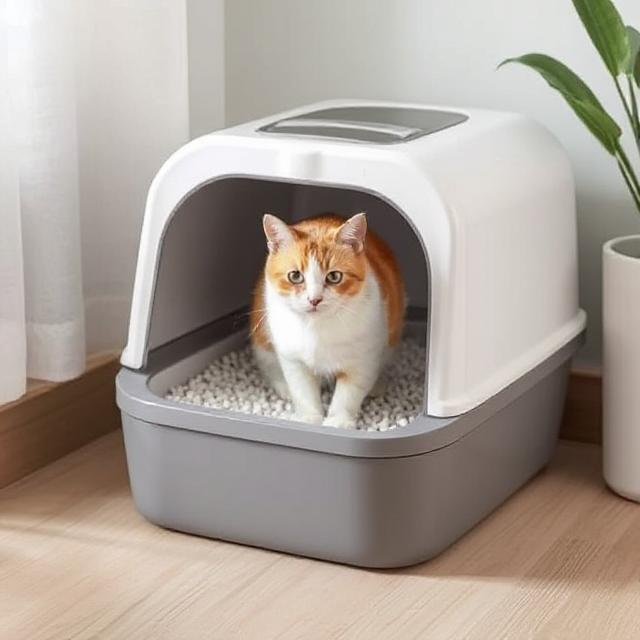
How Often Should You Change an Automatic Cat Litter Box?
Factors That Determine How Often You Should Change the Litter
The frequency of changing the litter in your automatic cat litter box depends on various factors. Here are the main factors to consider:
Number of Cats in Your Household
If you have multiple cats, the litter will accumulate more quickly, and you may need to change the litter more often. For a single cat, you might only need to replace the litter every 4–6 weeks. However, with multiple cats, the litter may need to be changed more frequently, every 2–3 weeks or as needed.
Type of Litter You Use
Some types of litter, such as clumping litter, may need to be replaced more frequently than others. Clumping litter forms solid clumps when wet, which are easier to remove, but the entire litter may still need to be replaced every few weeks.
Non-clumping litter, such as crystal or silica gel litter, may last longer but still requires periodic replacement. Depending on the type, you may need to replace the litter every 3–6 weeks.
Size and Capacity of the Automatic Litter Box
Larger automatic cat litter boxes designed to accommodate multiple cats will typically require less frequent changes of litter, as they hold a larger volume of litter. Smaller boxes or models with a limited waste compartment may require more frequent cleaning and litter changes.
Odor Control and Freshness
Even though an automatic cat litter box cleans itself by sifting out waste, it does not eliminate odors or completely refresh the litter. If you start to notice a strong odor even after the box has cleaned itself, it may be time to replace the litter. Some automatic cat litter boxes are equipped with odor control features, but regular litter changes are still necessary for a fresh-smelling environment.
Maintenance and Cleaning
Regularly cleaning the automatic cat litter box itself is essential to its longevity and effectiveness. If you don't clean the box itself, even the best litter won’t perform as well. If your litter box gets too dirty, it might be harder for the automatic cleaning mechanism to function effectively, leading to a need for more frequent litter changes.
General Recommendations for Changing Litter in an Automatic Cat Litter Box
Here are some general guidelines to follow for changing the litter in an automatic cat litter box:
Single Cat Household: For a single cat, it is generally recommended to change the litter every 4–6 weeks. However, you should still check the box for odors or excessive clumping that may require more frequent changes.
Multiple Cat Household: If you have more than one cat, expect to change the litter more frequently. It's generally recommended to change the litter every 2–3 weeks, depending on the number of cats and the type of litter.
Clumping Litter: If you use clumping litter, consider replacing the litter entirely every 4–6 weeks, even if the waste is removed regularly by the automatic cleaning mechanism. Clumping litter can lose its effectiveness after a while.
Non-Clumping Litter: If you use non-clumping litter, you might only need to change the litter every 3–6 weeks, but keep in mind that some models of automatic cat litter boxes may require more frequent replacement due to the type of waste they collect.
Odor Control: If you start to notice unpleasant smells, it's a sign that the litter needs to be changed. Even the best automatic cat litter boxes can't fully eliminate odors without clean litter. At that point, replacing the litter will help restore freshness.
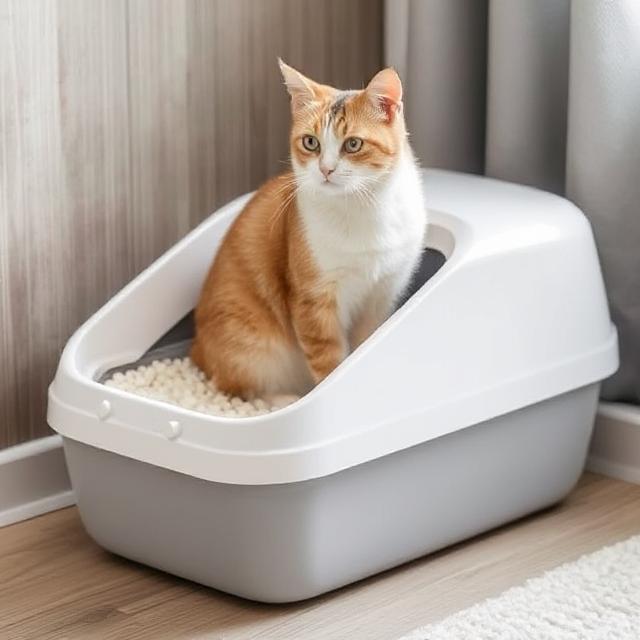
How to Maintain Your Automatic Cat Litter Box
Maintaining the automatic cat litter box regularly will ensure it continues to work effectively and prolong its lifespan. Here are a few maintenance tips:
Clean the Box Regularly
Even though the automatic cat litter box performs the cleaning function for you, it's essential to clean the box regularly. Wipe down the box with a damp cloth and mild soap every 1-2 weeks to prevent waste build-up and ensure the cleaning mechanisms continue to work smoothly.
Replace the Litter When Necessary
As mentioned earlier, change the litter every 2-6 weeks, depending on your specific situation. Ensure that you follow the manufacturer's recommendations for replacing the litter, as using the wrong type of litter can affect the box's performance.
Check the Sensors and Mechanism
Regularly check the sensors and cleaning mechanisms in the automatic cat litter box to ensure they're functioning correctly. If your box uses a rake or rotating mechanism, make sure it is moving freely and that there are no obstructions.
Use the Right Type of Litter
Be sure to use the type of litter recommended by the manufacturer of the automatic cat litter box. Some models work best with clumping litter, while others may be designed for non-clumping types. Using the wrong litter can affect the performance of the cleaning mechanism and may lead to more frequent litter changes.
How to Choose an Automatic Cat Litter Box?
Choosing the right automatic cat litter box can greatly improve the quality of life for both you and your feline companion. With the wide variety of models available on the market today, it's essential to consider several factors that will determine the best option for your cat and home. From size and design to functionality and maintenance, each of these factors will impact your overall experience with the automatic cat litter box.
Key Factors to Consider When Choosing an Automatic Cat Litter Box
Size and Space
Dimensions: One of the first things you should consider is the size of the automatic cat litter box. Ensure that the litter box is large enough for your cat to comfortably move around in. Cats need space to dig and position themselves properly before doing their business. A box that's too small may cause stress or discomfort for your cat.
Space Requirements: Some models can be bulky, so make sure the box fits in the space available in your home. Measure the area where you plan to place the box to ensure a proper fit.
Litter Type Compatibility
Litter Type: Check what type of litter is compatible with the automatic cat litter box you're considering. Some models require clumping litter, while others may work with both clumping and non-clumping types. Using the right litter will ensure the automatic cleaning system works as intended.
Cleaning Mechanism
Self-Cleaning Technology: The automatic cat litter box uses different methods to clean itself. Some have a rake system that sifts through the litter, removing waste, while others may have a rotating mechanism that separates waste from clean litter. Ensure that the system suits your needs and that it can handle your cat's waste effectively.
Odor Control: Many models come with built-in odor control features, such as carbon filters or the ability to seal waste in bags or compartments. Choosing an automatic cat litter box with effective odor control will ensure a fresh-smelling environment.
Noise Level
Quiet Operation: Some automatic cat litter boxes can be noisy during operation, especially models with moving parts like rakes or rotating drums. If you or your cat are sensitive to noise, choose a quieter model to avoid stress or disturbance. Check product reviews to find out how loud the machine is before making a purchase.
Ease of Maintenance
Waste Disposal: Look for an automatic cat litter box that makes waste disposal as easy as possible. Some models feature waste bins that are easy to empty, while others include disposable waste trays. This feature saves you time and reduces the need for frequent cleaning.
Cleaning the Box: Some automatic cat litter boxes have removable trays or parts that make cleaning easier. Choose a model that allows you to quickly clean the box and maintain hygiene without hassle.
Power Source
Battery-Powered or Electric: Automatic cat litter boxes come with different power options. Battery-powered models offer flexibility and can be placed anywhere, but you'll need to replace the batteries regularly. Electric models are more consistent in performance and generally more powerful, but they require access to an outlet.
Price and Budget
Cost Consideration: Prices for automatic cat litter boxes can vary greatly depending on the features, design, and brand. While high-end models may offer additional functions like Wi-Fi connectivity or self-cleaning waste compartments, budget models provide basic functionality at a lower cost. Make sure to balance your needs with your budget when making your selection.
Why Choose Cat Litter Box Automatic Cleaning Factory - Zhejiang Beijing Technology Co., Ltd.?
When it comes to choosing a high-quality automatic cat litter box, partnering with a trusted and reputable manufacturer is essential to ensure you're getting a durable, effective, and reliable product. Zhejiang Beijing Technology Co., Ltd. stands out as a leading provider in the automatic cat litter box industry, offering top-of-the-line products that meet the needs of both cats and their owners. Here's why you should consider choosing Zhejiang Beijing Technology Co., Ltd. for your automatic cat litter box needs:
Innovative Technology and Design
Zhejiang Beijing Technology Co., Ltd. uses cutting-edge technology to design automatic cat litter boxes that provide efficient self-cleaning functions. Their products feature advanced systems for waste removal, odor control, and easy maintenance, ensuring that your cat's litter box stays clean without the hassle.
Durable and Long-Lasting Materials
The company uses high-quality, durable materials in the construction of their automatic cat litter boxes. This ensures longevity, durability, and consistent performance over time, making their products an excellent investment for cat owners.
Ease of Use and Maintenance
One of the standout features of Zhejiang Beijing Technology Co., Ltd.'s products is their user-friendly design. Their automatic cat litter boxes are easy to set up and maintain, with features like removable waste trays and easy-to-empty compartments. This makes cleaning and maintaining the box a breeze, even for busy cat owners.
Wide Range of Products
Zhejiang Beijing Technology Co., Ltd. offers a variety of automatic cat litter box models, each tailored to meet the needs of different households. Whether you have one cat or multiple cats, there's a model designed to fit your specific requirements. Their versatile range ensures that every cat owner can find the ideal product for their home.
Affordability and Value for Money
While the quality of Zhejiang Beijing Technology Co., Ltd.'s automatic cat litter boxes is unmatched, they also offer competitive prices that make their products affordable for most budgets. Their products provide excellent value for money, offering both functionality and durability at an attractive price.
Customer Support and Warranty
The company prides itself on offering exceptional customer support. Zhejiang Beijing Technology Co., Ltd. provides clear guidance on setup, usage, and maintenance, ensuring that customers are fully satisfied with their automatic cat litter box. They also offer warranties for added peace of mind, knowing that you're investing in a quality product that will last.
Choosing the right automatic cat litter box can be a game-changer for cat owners looking for convenience, hygiene, and a reduced cleaning routine. By considering factors such as size, cleaning mechanism, odor control, and ease of maintenance, you can ensure that you select the best model for your needs. Additionally, partnering with a trusted manufacturer like Zhejiang Beijing Technology Co., Ltd. ensures that you receive a high-quality product designed to last, making your experience with an automatic cat litter box even better. Whether you're upgrading from a traditional litter box or trying an automatic one for the first time, investing in the right model will make caring for your cat easier and more efficient.


